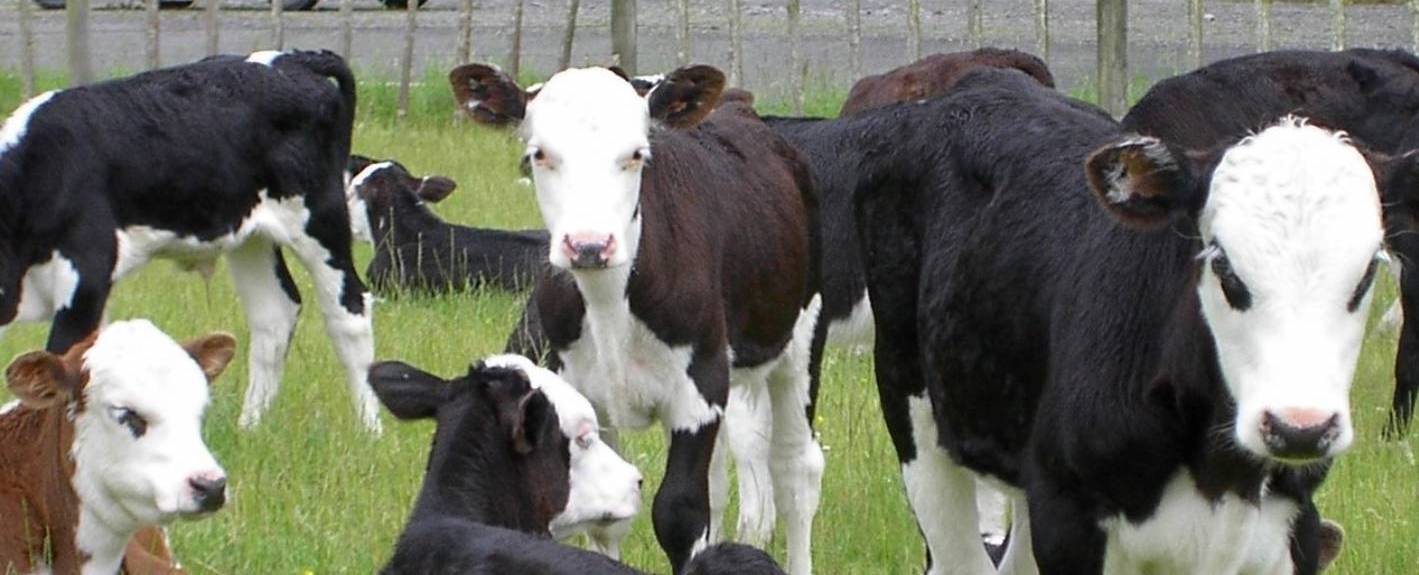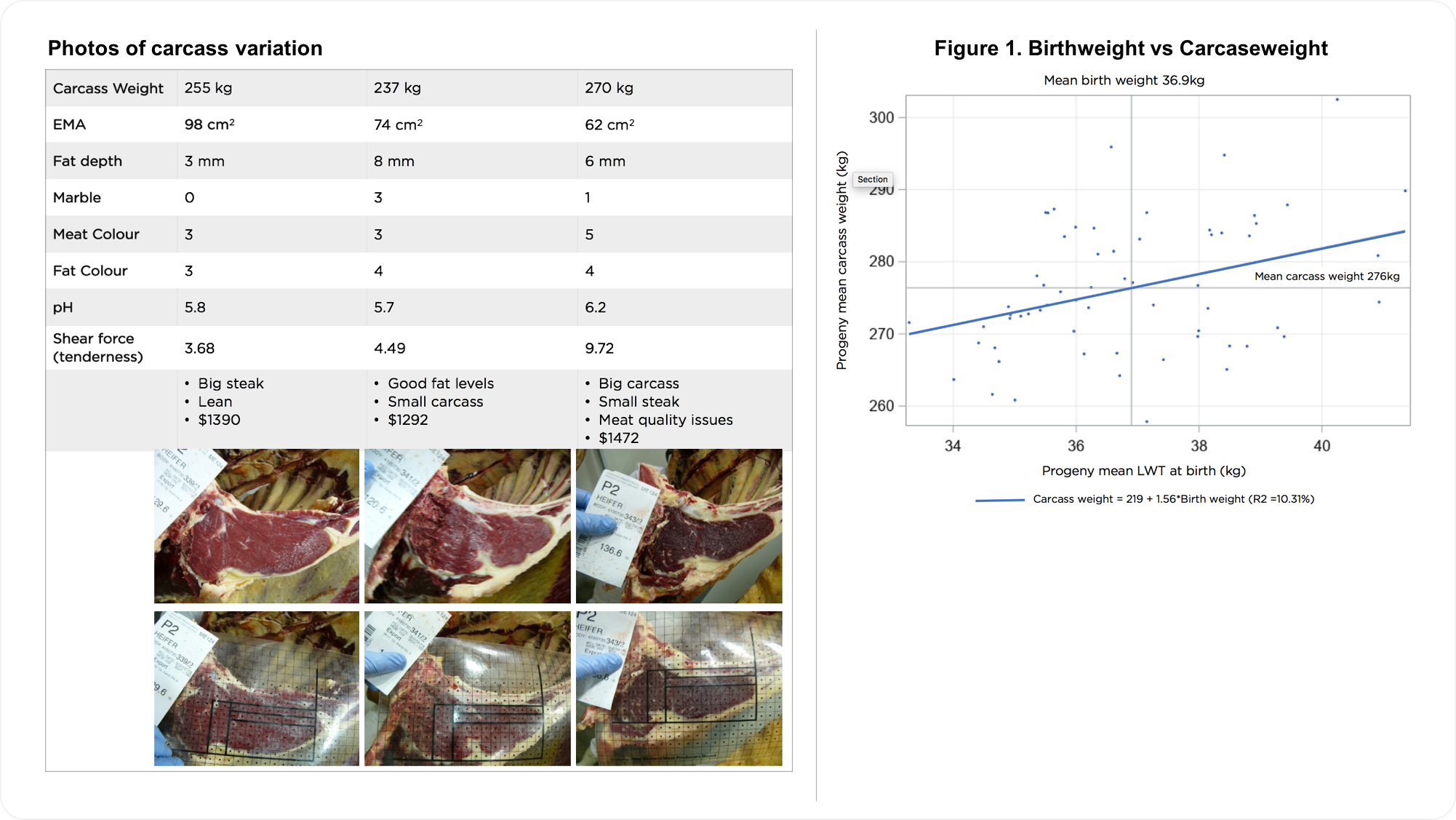Right bull can lift weights by 45kg
Saturday 2nd May 2020

This article was published in Country-Wide Beef, May 2020.
By Associate Professor Rebecca Hickson (B+LNZ Genetics Dairy Beef Progeny Test Project Leader)
Latest results from the Beef + Lamb New Zealand Genetics dairy beef progeny test show that up to 45kg of additional carcass weight can be achieved by mating dairy cows to the right beef bulls.
Across the 2016 and 2017 seasons, 39 Hereford and 34 Angus bulls were mated via AI to crossbred dairy cows at Limestone Downs, Port Waikato. The resulting calves were run in large mobs until finishing at 23-31 months at an average of 500kg and 600kg liveweight for heifers and steers, respectively.
Based on their estimated breeding values (EBVs), bulls were selected for:
- lighter than breed average birth weight
- gestation length and
- 600-day weight.
With gestation length and 600-day weight, bulls were selected with a range of EBVs, so the science team could assess the relationship between EBV and actual performance, aware the dairy farmer wants a short gestation and the beef farmer wants heaviest carcass weight.
Earlier reports out of this progeny test show Breedplan EBVs are good predictors of birth weight and gestation length. None of the test’s bulls caused calving difficulty when used over the cow herd.
Calves’ management
Calves were hand-reared and weaned at 90kg. At three to four months old – weighing a minimum of 100kg – they moved from the Limestone Downs’ dairy unit to its sheep and beef farm.
At four months old, calves were allocated to their lifetime mobs – based on weight and sex – where they remained until processing.
They were weighed at 200, 400, 600 days old, before being processed at a mean age of 2 years and 4 months.
Processing details
Once the mob average reached target weight, that mob was processed as a group at Hamilton’s Greenlea Premier Meats. The requirement for all cattle to go in a group meant there was considerable variation in animal liveweights.
An impressive 97% of 1017 cattle graded P2, and the remainder were L2. Carcass weight and dressing-out percentage were affected by sire, as was eye muscle area. Therefore, for carcasses of the same weight, the proportion of weight in the high value muscles varied among sires. (See photos below).
Marbling and fat colour
Carcasses were assessed for marbling score and fat colour.
Of the 1017 animals processed, none were downgraded for yellow fat. The majority scored 3 on the fat colour 0-9 scale (higher is more yellow, and less desireable). Sire did not affect fat or meat colour, or pH.
Marbling was low overall (mean 0.9), with few carcasses exceeding 1 and none exceeding 3 on the marble score 0-9 scale (higher is more marbled). However, there was considerable variation among sires. The best sire achieved a mean of 1.6, compared with 0.3 for the worst sire.
Birth weight vs carcass weight
Most sires followed the expected pattern of heavier calves at birth growing to become heavier carcasses. (See Figure 1). However, there were some sires that produced above average carcasses, despite their progeny being born at below average birth weight.
There was a spread of carcass weights at any birth weight. This means that a dairy farmer wanting calves to be born in the 36-37kg range can do so, but these calves could vary by more than 30kg in carcass weight. On the flip side, there were sires who produced calves that were heavier than average at birth, but lighter than average at processing.
The key is to target the EBV for birthweight and 600-day weight.
It is worth noting that, while 4-day-old calf weight is a better indicator of finishing performance compared to no selection criteria at all, there is still large variation in carcass weight for any range of birth weight. Ideally, rearers should buy calves through established relationships, where they know a good growth bull has been used.
N.B. Across all the traits, sire averages were adjusted for sex and mob. As expected, fat traits were better for heifers, while size traits were better for steers.
Key messages for dairy farmers:
- There is a huge pool of bulls available that can be used safely over dairy cows and offer an improvement in gestation length and calf value.
- High quality beef can be produced from dairy beef calves, improving industry sustainability.
- Consideration of finishing traits, as well as calving traits, when selecting bulls can greatly increase the value of the calf to the rearer and finisher, without impairing calving performance.
Key messages for calf rearers:
- Sire has a big impact on growth and carcass traits of dairy-beef calves. I.e. Not all white-face or Angus calves are equal.
- Calves that are heavy at 4 days of age are not necessarily heavy at finishing. Knowing the sires’ EBVs will help you judge potential.

 Previous
Previous


